Just the thought of chef Alice Waters evokes simple fare—cooked with care—so as to highlight the intrinsic flavors of individual ingredients sourced from local farms, and grown with love.
Her approach to cooking was so rare in the United States, especially back in the early 70s when Waters started her famous Berkley, California restaurant, Chez Panisse, that she is credited with starting the farm-to-table movement in America.
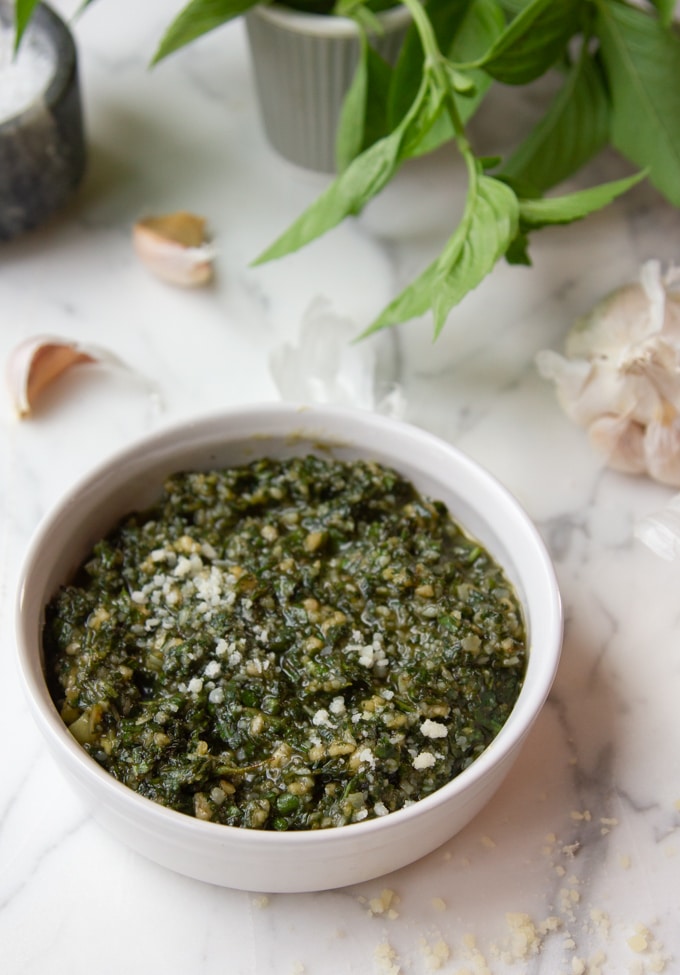
Food cooked with love, and respect for tradition, does make your heart skip a beat when you eat it. There’s a reason something has been done the same way for hundreds of years.
In this case, I am talking about basil pesto alla genovese (a.k.a. basil pesto), with the fresh garlic, pine nuts, basil leaves, and cheese, pounded by hand in a mortar and pestle.
It's a beautiful thing. There's something highly satisfying about smashing pine nuts in particular. Their lightness and high moisture content makes them explode on contact with a pestle (smashing tool). An odd pleasure, but a fun one.
The goal is to create a fine paste, starting with the garlic and pine nuts, then the basil, and finally the cheese and seasonings.
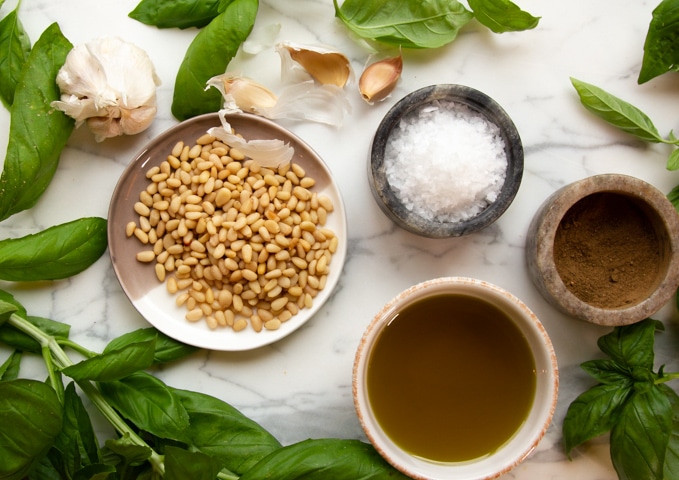
The method gives full control to the artist to create thier desired texture, and to treat the finest of ingredients with tender care.
Writing in her restaurant cookbook “Chez Panisse Vegetables,” Waters says:
Purists agree that the very best way to make pesto is to pound it by hand in a mortar. If you have the time and tools to do so, you will be rewarded with the pleasure of the process and the authentic taste of the resulting crude paste.
—Alice Waters
I should note here that Waters knows what she is talking about. It is not Chez Panisse for no reason. Waters has a degree in French Cultural Studies, and has lived in France on multiple occasions.
While pesto, which literally means to pound or to crush, comes from the Italian word “pestare,” and basil pesto is most associated with Liguria, Italy, you’ll also find plenty of pounded pestos in Provence, France.
But alas, dear reader, I am not here to tell you that you must break your fingers making pesto by pounding it out in a mortar and pestle, but you should know that this is the traditional method.
And, if you do have a sufficiently large mortar, I would encourage you to give this form of smashing therapy a try.
Not owning the equipment myself, I improvised with a regular ceramic bowl and a small wooden rolling pin as crude instruments.
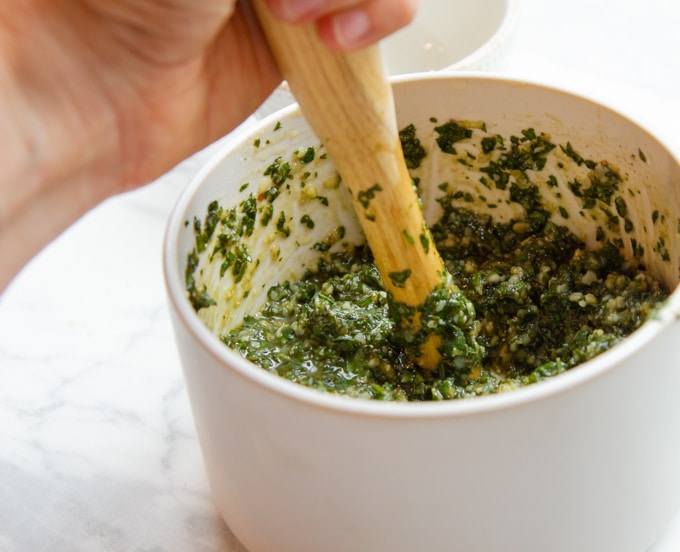
The Basil Pesto Compromise Trick
You will be happy to know that even Alice Waters recognizes that “it is impractical to make large quantities [of basil pesto] by hand.”
So at Chez Panisse they use a “compromise” and puree the basil in a machine, which is added to garlic and pine nuts that are ground in a mortar.
This recipe keeps Waters’ exact ingredients, but I modified the process, taking the compromise a step further.
I pureed the garlic, pine nuts, and basil in a machine, and then transferred it to a bowl to smash in the olive oil (and further smash the pine nuts).
As I smashed, I realized that the process releases an abundance of basil flavor into the oil, marrying it all together. (Along with your loving energy, of course.)
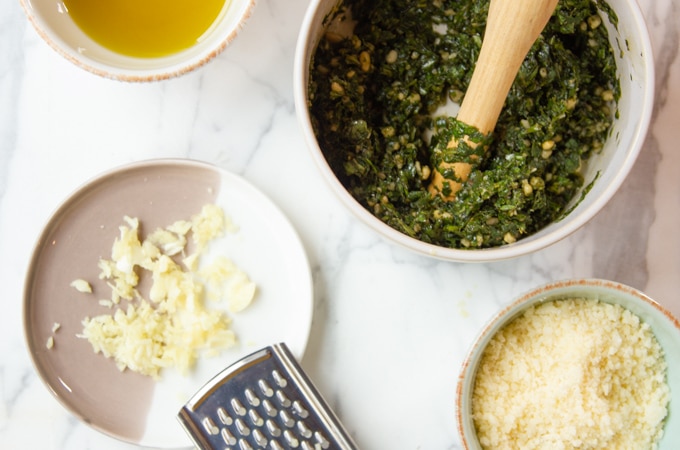
When I tasted my compromise basil pesto, “sublime” is hardly appropriate to describe how good it was.
I immediately started imagining how good it would be in the Italian fresh mozzarella and tomato sandwich with basil known as the caprese.
I imagined it slathered on toast with poached eggs, and of course, a basil pesto pasta.
RECOMMENDED RECIPES:
Turmeric Poached Eggs —GET RECIPE
The Caprese Sandwich, An NYC Deli Favorite
—GET RECIPE
However, if you want to skip this nod to tradition all together, simply finish everything in your food processor.
It will still be amazing. It’s how I made pesto for years working in restaurants and at home.
The choice is up to you. If you don’t have a machine, you can also chop everything up finely and mix it with a spoon.
Let’s talk a minute about ingredients, and then I’ll give you the recipe.
Basil Pesto Ingredients
The Basil
Basil pesto is traditionally made with genovese basil, which (fortunately) is the common Italian basil you find at most grocery stores, farmers’ markets, and gardens. It is the pungent, flavorful kind, with feathery soft leaves (the biggest leaves on the lower right in the photo).
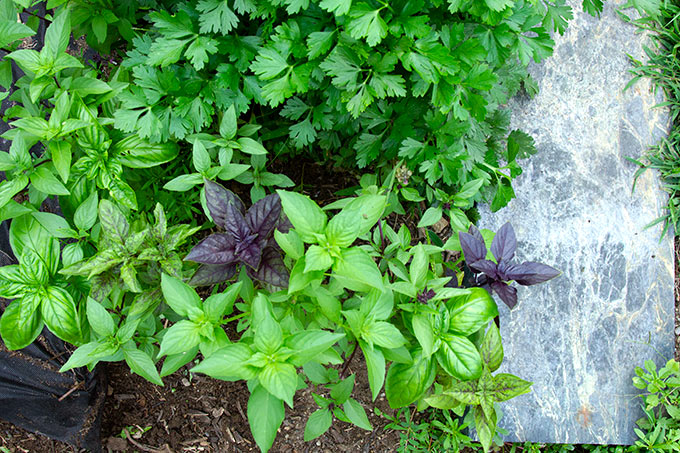
A quick note on storing basil. Basil is a most tender plant, so you generally want to avoid putting it in the refrigerator.
The best way to store basil is in a container of water, just like fresh cut flowers. It will keep fresh for days this way.
The Olive Oil
For the absolute basil purist, you would need olive oil made from Ligurian Taggiasca olives. That’s Italy for ya.
But really. I recommend using your best cold-pressed extra virgin olive oil. The kind that you don’t cook with.
If that was confusing for some readers, a quick note on olive oil.
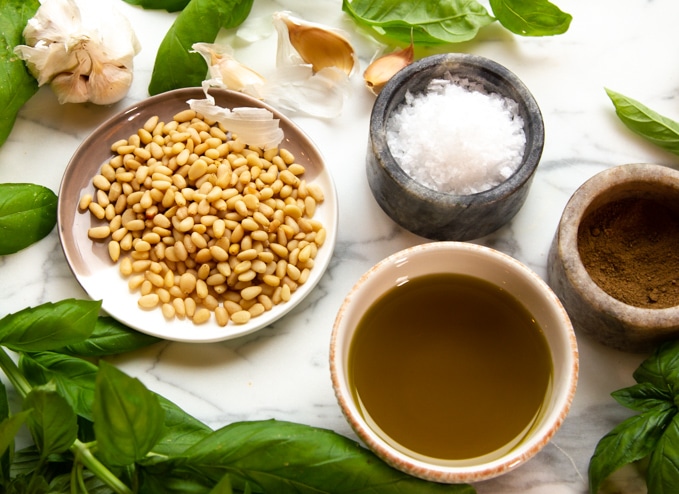
Not all olive oils are equal. If you like the taste, seek out a quality olive oil that says cold pressed, and don’t use it for high heat cooking. Save it for salad dressings, bread dipping, and pestos.
Refined light olive oils are most common, and the least expensive.
These have a higher smoke point, so they are safer for high heat cooking, but they have less flavor.
Some olive oils are even mixed with other vegetable oils. Read your labels.
The quality of oil you use will affect the flavor of your pesto.
The Cheese
Of course the cheese is very important. Our recipe calls for Parmigiano-Reggiano, a high quality, hard cheese that’s rich in savory umami flavor.
Unless your parmesan has this exact name, indicating that it’s made according to a specific recipe, and produced in the Italian provinces of Parma, Reggio Emilia, Bologna (only the area to the west of the river Reno), etc., it is not the right cheese.
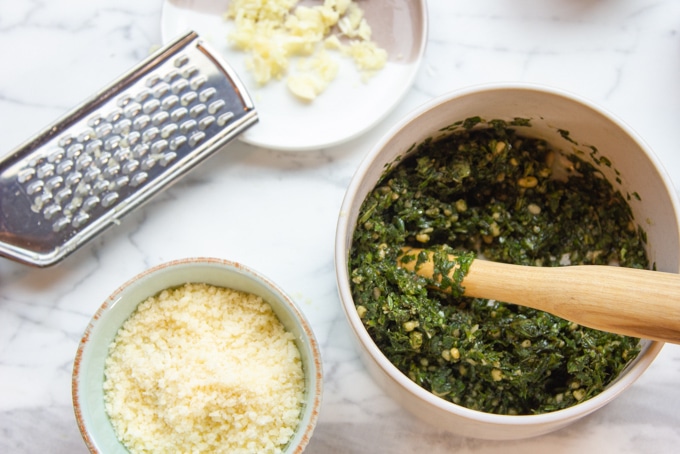
The only other recommended cheese is pecorino fiore sardo. Be careful not to pick up Pecorino Romano by accident, as this one’s off-the-charts salty, tangy taste will not work in basil pesto.
The Pine Nuts
Yes, they come from pine trees. Yes, they are expensive. Yes, they are worth it.
If you need a substitute, try raw walnuts instead. They are a similar consistency. Do not roast your nuts. You could also use almonds.
The Salt
I am such a salt snob, and sometimes I expect everyone to be the same. Thus, I would recommend that you use Celtic Sea Salt or Maldon Flake Salt for this recipe. Both are harvested by hand from the living ocean in a traditional way, and both carry a briny flavor and an abundance of minerals.
A second choice would be a quality rock salt harvested from a primeval ocean, such as Himalayan Pink Salt, or many of the other quality sea salts on the market today.
Whatever you do, do not use iodized table salt. This salt is chemically produced, and it will taint your precious pesto.
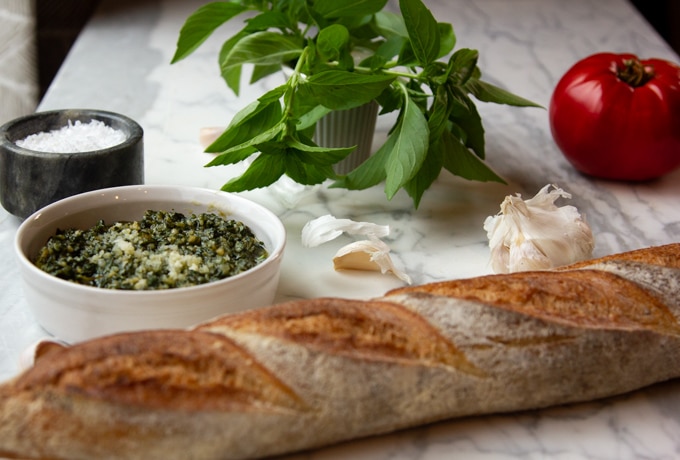
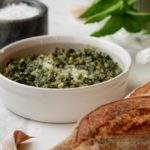
Alice Waters’ Basil Pesto Recipe
Helpful Kitchen Tools:
Ingredients
- 2-3 cloves garlic, chopped
- ¼ cup pine nuts
- 2 cups basil leaves, washed and dried
- ½ cup extra-virgin olive oil
- ½ cup Parmigiano-Reggiano cheese, grated or chopped
- pinch salt and pepper, see notes
Instructions
Traditional method
- Place chopped garlic (chopping first helps) and pine nuts in a mortar and crush with a pestle until smooth like cream.
- Add dry basil leaves and a pinch of coarse salt and grind until creamy again.
- Grate or chop cheese, and add it with some of the olive oil. Continue to smash until smooth. Add remaining olive oil and a pinch of pepper.
Compromise method
- Peel the garlic and place in a food processor. Pulse until finely minced. Add pine nuts and pulse until fine. Add dry basil leaves and pulse until uniformly chopped, but still a bit coarse.
- Remove into a mortar or bowl. Add grated or finely chopped cheese, half the olive oil, and a pinch of salt, and pound with a pestle or wooden spoon. Add remaining olive oil and a pinch of black pepper if you like.
* You could also finish the entire basil pesto in your food processor.
Notes
Ingredient Notes
THE BASIL: Basil pesto is traditionally made with genovese basil, which (fortunately) is the common Italian basil you find at most grocery stores, farmer’s markets, and gardens. It is the pungent, flavorful kind, with feathery soft leaves. A quick note on storing basil. Basil is a most tender plant, so you generally want to avoid putting it in the refrigerator. The best way to store basil is in a container of water, just like fresh cut flowers. It will keep fresh for days this way. Pesto can also be made with parsley leaves, spinach leaves, fresh oregano, arugula leaves, or any combinations of these. THE OLIVE OIL: I recommend using your best cold-pressed extra virgin olive oil. The kind that you don’t cook with. THE CHEESE: Of course the cheese is very important. My recipe called for Parmigiano-Reggiano, a high quality, hard cheese that’s rich in savory umami flavor. Unless your parmesan has this exact name, it is not the right cheese. Parmigiano-Reggiano is usually sold in blocks, but you can also buy it grated. The only other recommended cheese is pecorino fiore sardo. Be careful not to pick up Pecorino Romano by accident, as this one’s off-the-charts salty, tangy taste will not work in basil pesto. THE PINE NUTS: If you really want a substitute, try raw walnuts instead. They are a similar consistency. Do not roast your nuts. You could also use almonds. THE SALT: I would recommend that you use Celtic Sea Salt or Maldon Flake Salt for this recipe. Both are harvested by hand from the living ocean in a traditional way, and both carry a briny flavor and an abundance of minerals. Flake salts are traditional, and such salts just feel right for basil pesto. A second choice would be a quality rock salt harvested from a primeval ocean, such as Himalayan Pink Salt, or many of the other quality sea salts on the market today. Whatever you do, do not use iodized table salt. This salt is chemically produced, and it will taint your precious pesto.Nutrition
If you liked this post, please share it with your friends on social media, or leave a comment below.
For more Buttered Veg lifestyle content, follow me on Pinterest, Facebook, Instagram, and Twitter.
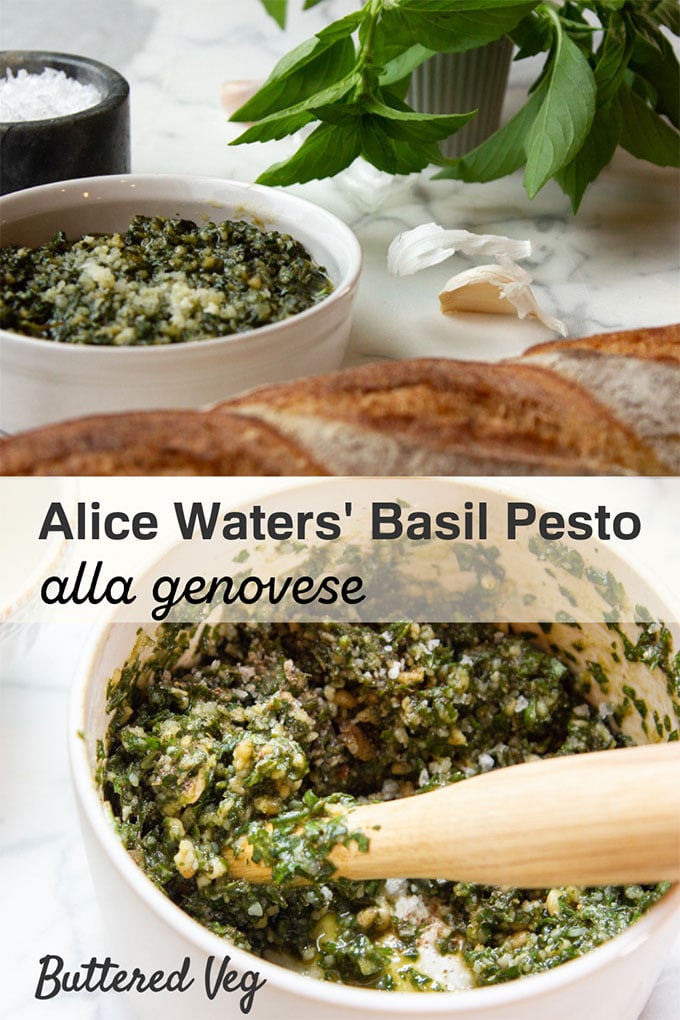

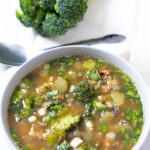


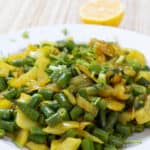




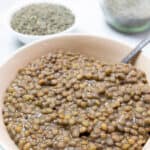
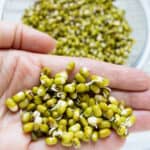
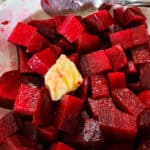

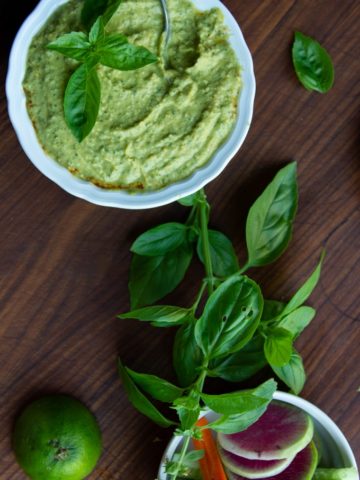
Susan Anacker
Thank you for sharing this recipe, which is really amazing. I have the Chez Pannaise Vegetables cookbook but did not make her pesto until last night for Christmas dinner. Everyone loved it and I wanted to send it to them, and found your information and insights just now so I can.. I made it in the blender, and grinding the pine nuts with the garlic really does make a difference! Also making sure you don’t skimp on the amount of basil. Don’t over grind it, and make sure the basil is coarsely chopped. I have made pesto many times, and do roast the pine nuts, but put them in at the last minute to be slighly ground . I did this step though not recommended, yet it was nice to have the additional large pine nut pieces, too. Hope everyone will try Alice Water’s pesto, as you will not be disappointed. It’s the best, and you will get compliments on it as i did.
Andrea
Hi Susan,
Thank you for leaving this beautiful comment. I am so pleased that you found so much joy from making this pesto, and that my writeup of this recipe helped you, and that you were able to share this recipe with others. What a great story! I agree that everyone should try this. Basic is a welcome taste in the winter, that, along with the garlic and lemon, brings warmth to the plate. Happy cooking! Andrea